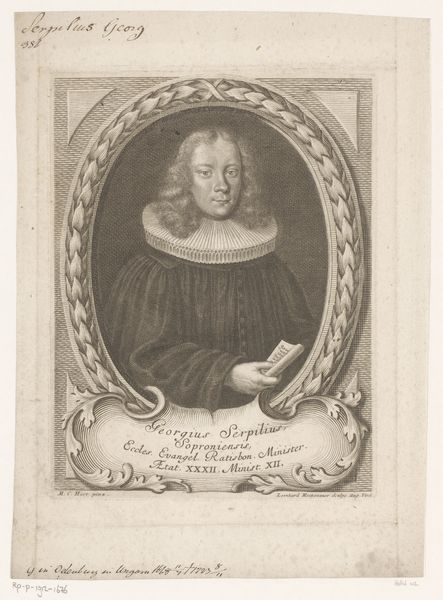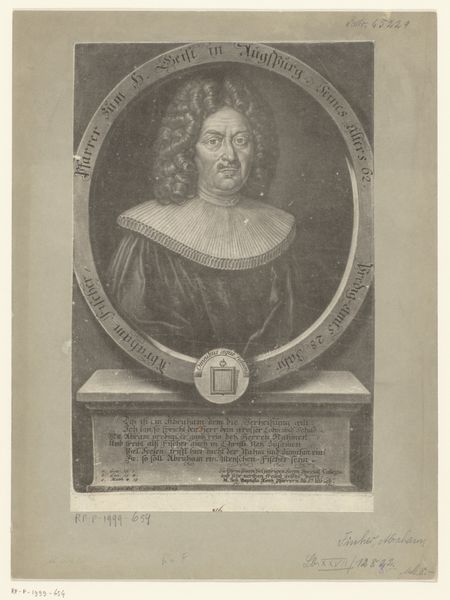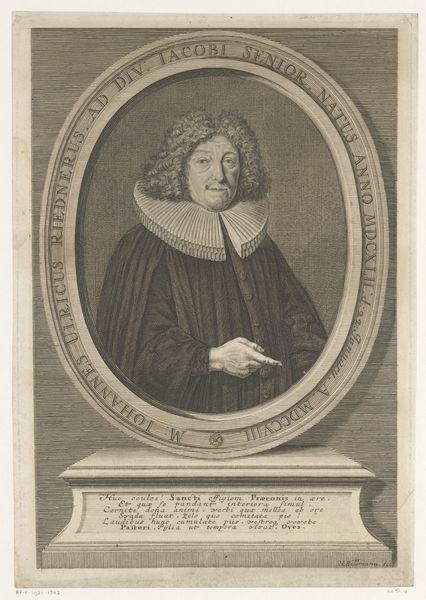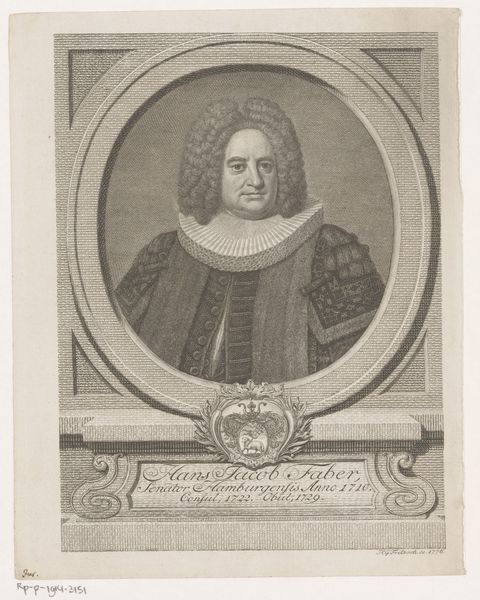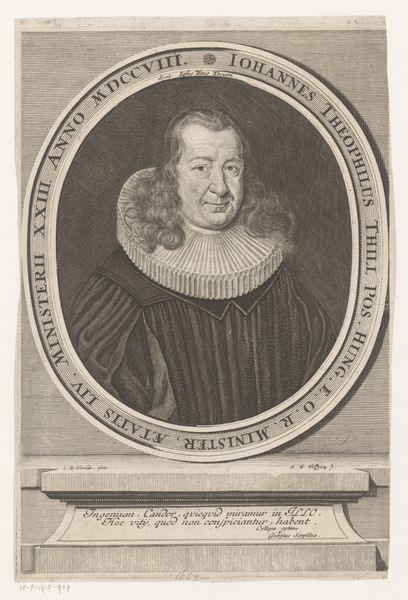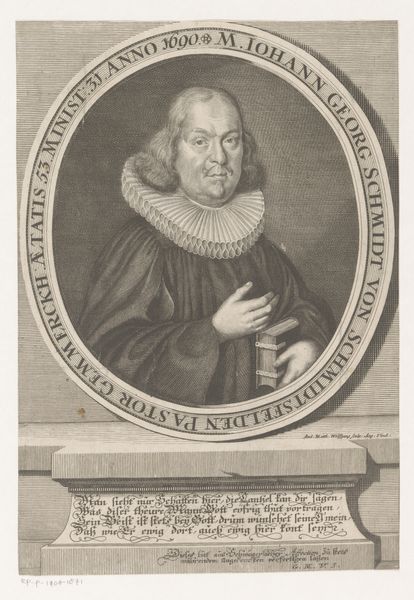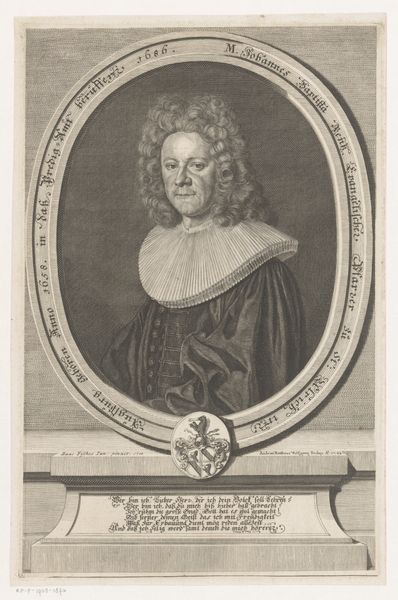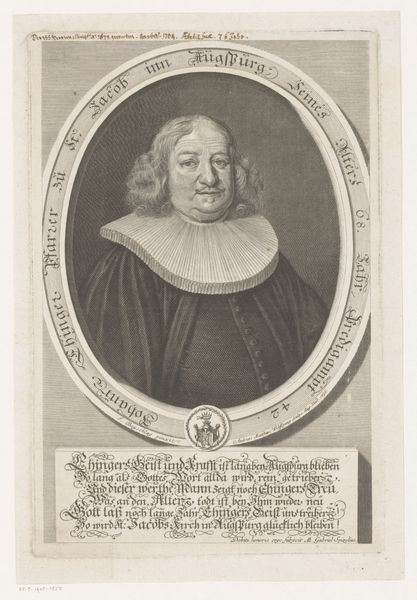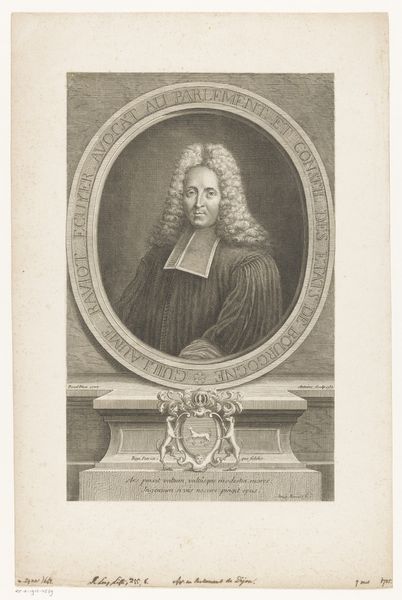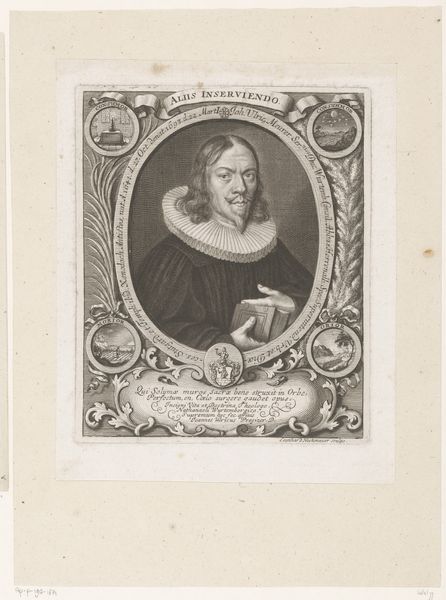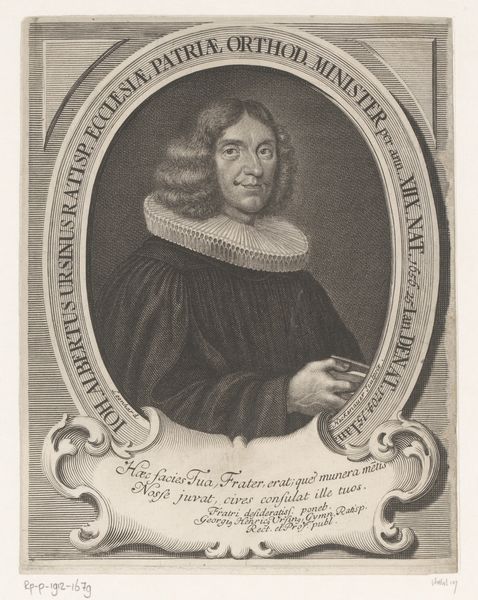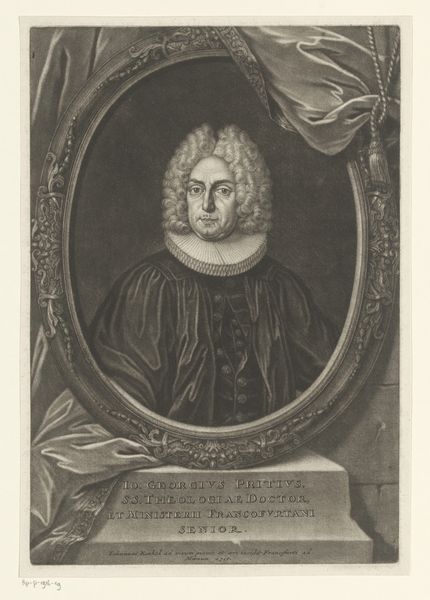
print, engraving
#
portrait
#
baroque
# print
#
old engraving style
#
history-painting
#
engraving
Dimensions: height 200 mm, width 148 mm
Copyright: Rijks Museum: Open Domain
Curator: Here we have a striking portrait, an engraving likely from 1728 or 1729, titled "Portret van Johann David Federer." The rendering really jumps out, doesn’t it? Editor: It's quite somber, wouldn’t you say? The sharp, thin lines almost give him a severe air, which contrasts strangely with the softer, more flowing forms of his wig and the ruffled collar. Curator: Yes, there's a tension at play. Federer was a minister, as indicated by the inscription encircling his portrait which names him, gives his title and proclaims that he is 'orthodox'. His identity is clearly communicated within a theological framework. We must consider how notions of orthodoxy intersect with societal hierarchies and potentially suppress dissenting voices. Editor: Interesting, to view this as potentially suppressive but there is also a practical craft element, surely. This portrait uses an engraving technique and it must be challenging to translate the textures of cloth, hair, and skin into linear marks with such fidelity. It really highlights how skill and craft intersect with social position in this time. Curator: Indeed, but let's not overlook the implications embedded in such visual representations of power. What ideological work is this engraving doing in portraying Federer with such…stolid respectability? Consider the social conditions needed for the production of such an artifact; who did this image serve and in what manner? Editor: Well, I think its material value provided status. Possession of a fine engraving signified more than just having disposable income; it demonstrated a cultivated taste, which at this time, and arguably even now, continues to reinforce class distinctions. What about its legacy for us? Curator: I think interrogating it through intersectional perspectives opens it to complex discourse on identity, authority and representation. I come away from it seeing how, even in these controlled portraits, clues exist about the multifaceted societal forces and inequalities present during this time. Editor: Absolutely. For me, it shows the value of interrogating the process by which images and items were created—shedding new light on social narratives while examining materiality within class and gender.
Comments
No comments
Be the first to comment and join the conversation on the ultimate creative platform.
